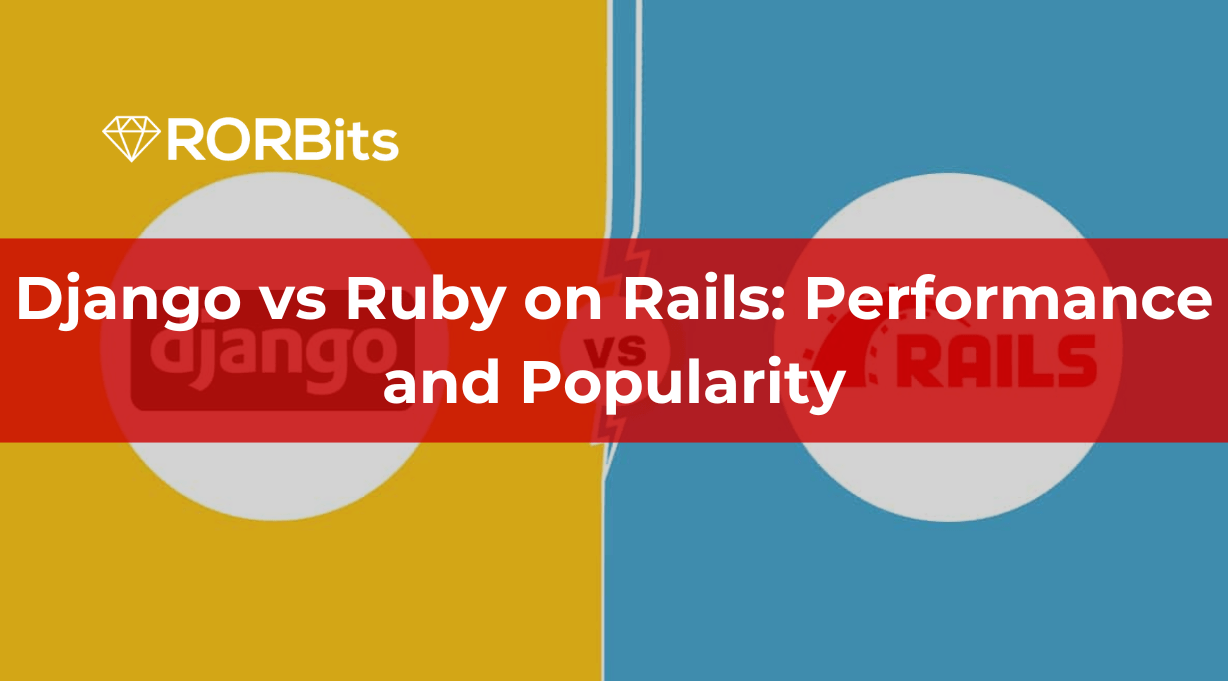goEver wondered what goes behind developing a website? What are the languages used? How are they used? Or rather, what goes behind the tasks that put up a website in use. Amidst the varied types of websites that one goes through throughout the day, the developing language plays a huge role. Django vs Ruby on Rails are just some of them. While comparing these languages for the best one, let us understand what these are.
What are Django and Ruby on Rails?
Django is a Python-based web framework best known for producing Python apps. It was first released in 2005 as a free, open-source, and universal framework. Programmers praise Django’s features for its functions. Its developments have helped simplify the method of creating sophisticated, database-driven websites.
Ruby on Rails is an open-source server-side web app framework created under the MIT License. It’s a fledged framework that offers an ORM (Object Relational Mapping) system for business data and logic, application management, and routing. Because Rails is a model-view-controller framework, it comes with excellent default structures for a database, online services, and pages. It is a time-saving approach for programmers to write code. It’s a preferred choice in Silicon Valley.
Ruby on Rails helps expand web solutions and provide new features and modules. Many industries like Health Care, Commerce, Media, Education, Hosting and Datacenter, Banking, and Insurance have benefitted.
Pros and Cons of Django and Ruby on Rails
Django Pros and Cons
Pros
Django is a scalable, mature software and plug-in-wealthy framework. It’s adaptable, has a strong Admin Panel, and helps the Representational State Transfer (REST) foundation (the toolkit for constructing Web APIs). Django uses a battery-unfastened approach, permits MVC (model–view–controller) development, and has an exceptional database and device interoperability, making it accessible.
Cons
Django can’t handle multiple requests simultaneously, which may slow things down. It supports Django ORM (ObjectRelational Mapper), which allows you to attach to your database the same way as SQL. Django can be overly monolithic (the other side of off-the-shelf ready-to-use solutions). It recommends that programmers follow patterns within the framework.
Ruby on Rails
Pros
Ruby on Rails is straightforward to edit, easy to migrate, with fast development. Rails have default settings and an impactful test environment. Ruby on Rails incorporates a vibrant community to assist one in practice and growth. The structure of the component relies on plugins and gems, which provide better functionality with less effort. There’s also a comprehensive guide called The Rails Way that teaches you ways to use Rails to make production-quality applications.
Cons
Developing APIs using Ruby on Rails is difficult. Document quality and standards are inconsistent. The run-time performance is often slow and strict. There are ways to code the identical problem that numerous lines of coding can become hard to know, even more complicated, and needs rewriting.
Both Django and Ruby on Rails are frameworks for web development that help build clean, modular code and cut the time spent on web development tasks by half. Both follow the concept of MVC. This further implies that the domain is a model where the applying data is displayed, and one can interact with the user individually. The question is how to choose the framework. It depends on which language you favor or which software development concept you pursue. It relies on wise default settings like Ruby’s rule principles and Python’s “explicit but implicit” principles. At the same time, the Web Framework Performance and Popularity of the two web developers are strikingly different.
- Read more Ruby on Rails web application
Summary
To summarise it let us check about their performance and popularity factors.
Web Framework Performance
Comparing the performance of Django vs Ruby on Rails, you’ll be able to see that Rails is 0.7% faster. It is because Rails has access to a library of great modules and plugins that help improve the speed and performance of the framework. Django, on the contrary, supports rapid development and is fair for web frameworks. The authentication module and other features of the Django framework are functional. Still, the speed of Django and Rails is perfect for both because it uses the newest programming languages and includes optimization tools.
Web Framework Popularity
Python is so popular that it makes Django more popular than Ruby on Rails. Django is widely taught in colleges and is incredibly fashionable for scholars and scientists. Python is too powerful for Ruby on Rails. Rails encompass a more active community that regularly creates bespoke solutions within RubyGems. As a result, Ruby on Rails lags far behind Django in recognition.
Although no framework is superior, you can decide the framework which is better suited to your project requirements. Based on the client’s requirements, one can choose either of the options for web development.




